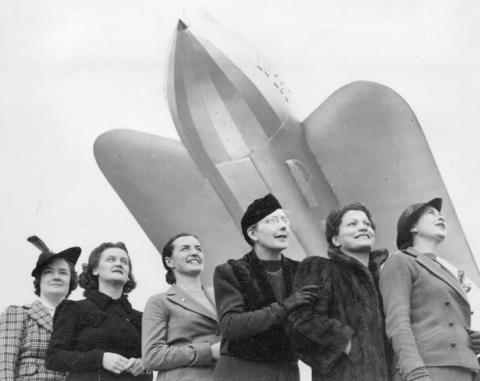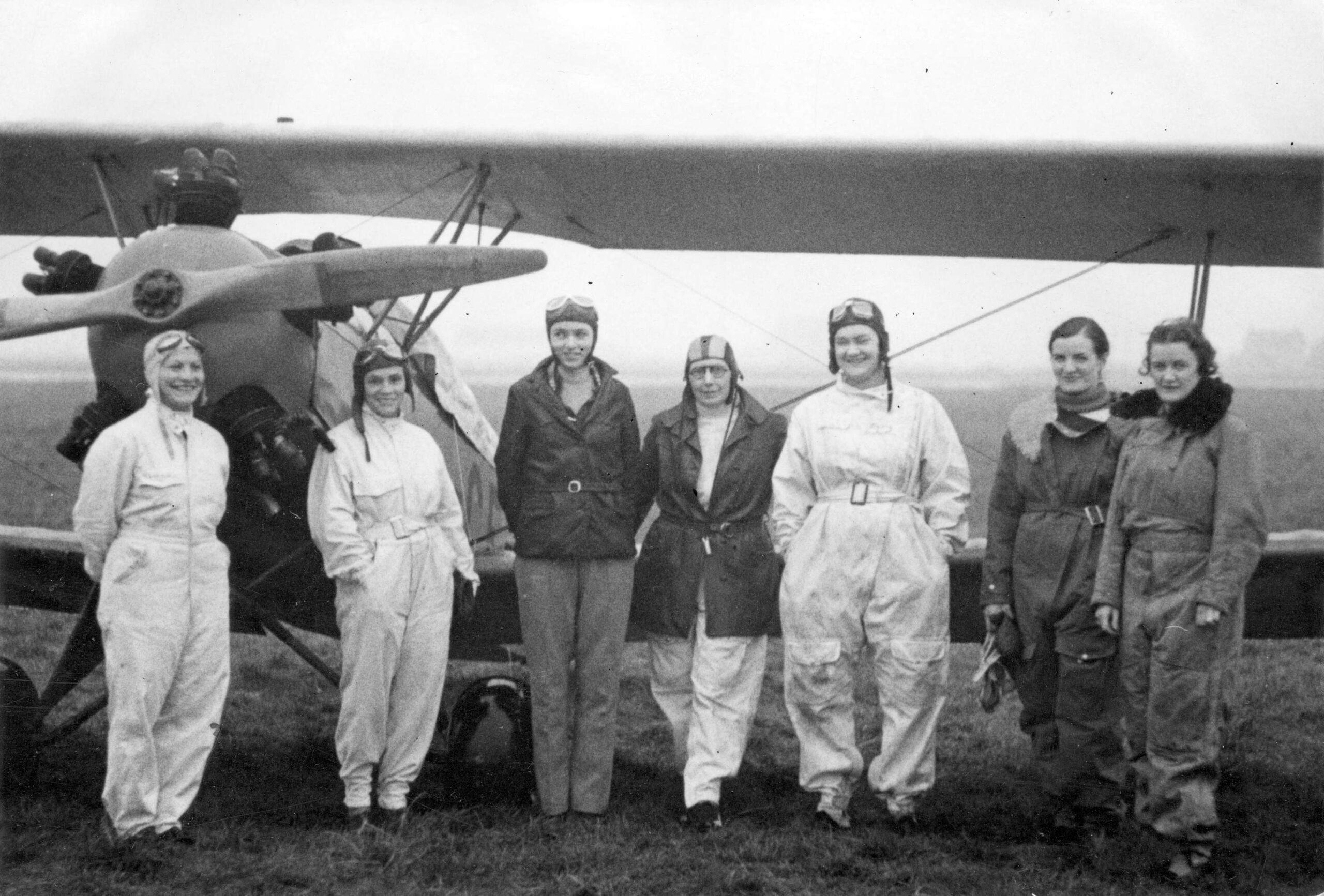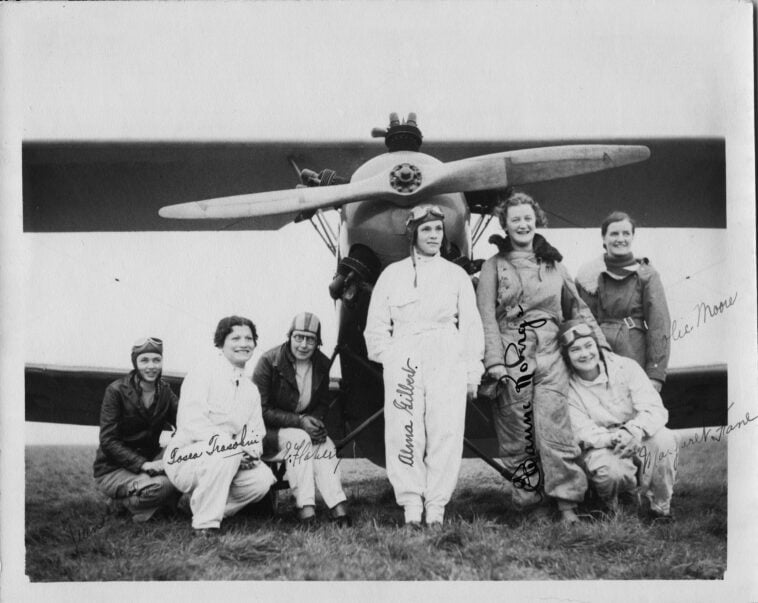Have you ever looked up at a plane and wondered where it was going, or even more—wanted to be the one deciding where it goes? Such daydreams captivated Elianne Roberge when she saw one fly over Prince Rupert, where she grew up in the early 1900s. Imagine only seeing one plane ever flying over your region in your childhood, but then one day, one rolls into your town on a train.
For Elianne, that moment came in 1921 when she was just a schoolgirl at St. Joseph’s Academy. The sight of L. Morton Bach’s biplane, tethered and weather-beaten after its journey toward an ambitious but ill-fated Mexico-to-Siberia flight, sparked something in her. While others marveled at the craft, Elianne’s entrepreneurial spirit took flight. Sneaking out of class, she snagged a piece of the plane’s fabric, later cutting it into squares, autographing them, and selling them for a penny each. It was a small act of rebellion and ambition—a prelude to her trailblazing role in aviation history.

Elianne’s path to the skies wasn’t straightforward. Her mother demanded she pursue an education, so Elianne moved to Montreal, where she stayed with her grandparents and studied at École des Beaux-Arts. But aviation’s call was strong, and by 1930, at 21 years old, she had earned her pilot’s license, becoming the 21st woman in Canada to do so. Two years later, she became the fourth woman in the country to achieve a commercial pilot’s license—a remarkable feat in an era when women’s capabilities in aviation were still questioned.
By 1936, Elianne was living in Vancouver and working as a secretary and dispatcher for Yukon Southern Air Transport. There, she honed her flying skills, earning the position of co-pilot on search-and-rescue and firefighting missions. But it was that same year that she and six other women—Tosca Trasolini, Margaret Fane, Alma Gilbert, Rollie Moore, Betsy Flaherty, and Jean Pike—formed the Flying Seven. Dubbed the “Sweethearts of the Air” by the press, this pioneering group of female pilots sought to prove that “a woman’s place is in the air.”
“The first time my mother ever saw me fly, I crashed.”
Elianne Roberge Schlageter
The Flying Seven made their bold debut on a hazy November morning with Canada’s first all-woman “dawn-to-dusk patrol” at Vancouver Airport. Flying in shifts for nearly 11 hours, they kept at least one plane in the air at all times, piloting a fleet of aircraft that included Fairchild biplanes, a Golden Eagle, and Gypsy Moths. Their mission? To shatter the stereotype that aviation was solely a man’s domain.
During World War II, the Flying Seven contributed to the war effort in creative ways. When their applications to join the Royal Canadian Air Force were rejected—they were told “no arrangements have been made to employ women pilots for the duration of the war”—they turned their attention to fundraising and training. In 1940, they staged a daring pamphlet drop over Vancouver, raising $100,000 for the purchase of eight new planes to train pilots at Vancouver’s new flight school. They also established Canada’s first aerial training center for women, teaching flight theory and parachute packing. Many of their graduates found work with Boeing and other aviation companies.

Despite her achievements, Elianne’s flying career faced its share of setbacks. After the war, the consolidation of bush airlines into Canadian Pacific Airlines limited her opportunities in aviation. Even as her flying days waned, Elianne remained active in aviation circles, fondly recalling her time with the Flying Seven.
Elianne Roberge’s story is one of perseverance, ingenuity, and an unyielding belief that the skies were not a limit but an invitation. From her childhood fascination with a biplane in Prince Rupert to her innovative and determined efforts as a member of the Flying Seven, she helped pave the way for women in aviation. Her legacy is a reminder that ambition, persistence and courage can take us to unimaginable heights.




